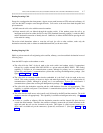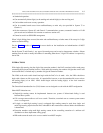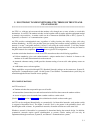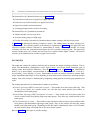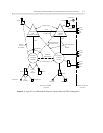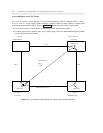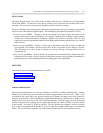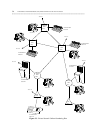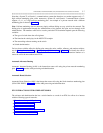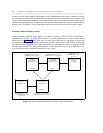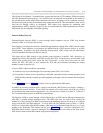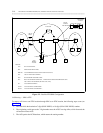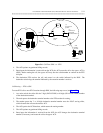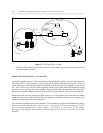ELECTRONIC TANDEM NETWORK (ETN) THROUGH THE ETN AND PNA PACKAGES 5-5
_ ______________________________________________________________________________________
_ ______________________________________________________________________________________
_ ______________________________________________________________________________________
Off-Net Trunks
The public network trunks carry off-net AAR call traffic when the call is identified by a 10-digit number
(NPA-NXX-XXXX). In some cases, calls may be carried as far as possible on-net and then routed to off-
net trunks. Conversely, the call may access the public network close to the its origin.
When you administer your routing patterns and trunk group preferences, the type of routing you implement
may have one of three underlying philosophies. These underlying philosophies are defined as follows:
• Tail-end-hop-off (TEHO) — Routes an off-net call through the private network and off-net at the
tandem switch closest to the call destination. For example, a tandem switch in Miami, Florida, which is
connected to a switch in Sacramento, California, originates a call to Fresno, California. The call is first
routed on-net over the intermachine trunks between Miami and Sacramento and then hops off on the FX
trunk to Fresno.
• Head-end-hop-off (HEHO) — Routes an off-net call to the tandem switch that is closest to where the
call originated. For example, a private switch in New York City originates a call to Denver, Colorado.
The call tandems to an on-net switch in Trenton, New Jersey, and hops off using WATS service to
complete the call.
• Best-end-hop-off (BEHO) — Routes off-net calls using the most economical facility and departure point
within the private network. The call may hop off the private network at the originating, intermediate, or
terminating tandem switch depending on how the routing patterns are administered.
FEATURES
Three features are used in the implementation of an ETN:
• Uniform Numbering Plan
• Automatic Alternate Routing
• Automatic Route Selection
Uniform Numbering Plan
One of the most fundamental, yet necessary, attributes of an ETN is a uniform numbering plan. Uniform
numbering is a feature that gives each station or terminal a unique number (a location code — RNX — plus
an extension) that can be used at any network location and is identical in format across all the stations or
terminals in the network. Uniform numbering is implemented through the administration of AAR on every
tandem switch in the private network. With uniform numbering, a tandem switch passes the destination
terminal’s location code, extension, plus any applicable traveling class marks (TCMs), to the next tandem
in the network. Two types of TCMs are possible. The first specifies the originator’s facility restriction
level; while the second records the number of "special" routes (for example, satellite hops) a call has taken
thusfar. The second TCM is supported only in the System 85 and Generic 2 communications systems.



